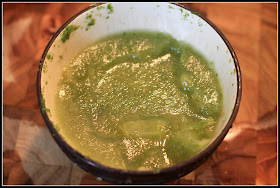Aphids are big (yet tiny) pests in my garden. Luckily, if you can stay on top of your pest control routine they won't do too much damage.
(I guess I should have warned you, it's gross)
What do aphids do to your plants?
Aphids will suck the fluids from a plant which can result in stunted plant growth. They also can carry diseases between plants.
Ways to get rid of them:
1. Blast them with a hose. They will easily come off, but this a temporary solution.
2. Ladybugs- Ladybugs love aphids and will inhale them. It's quite fun to watch. You can pruchase ladybugs at most garden stores and you can set them free in your garden. Hopefully they will stick around.
3. A homemade insecticidal soap. 1 part vegetable oil/2 parts water/2 parts dish soap. Spray the plant with your mixture.
My poor cilantro start. You can see the leaves are starting to curl from the aphid damage.
4. Organocide. I have purchased severeal organic "insecticides" and have had little luck. However, this one seems to be the best. I had a jalapeno plant that was infested with aphids. I blasted off the aphids with a hose, and sprayed Organocide on the plant, and the aphids never came back!
Organocide is made up of Sesame Oil, Fish oil, Lecithin, and water. It claims to kill 25 different insects including spider mites, and white flies. Organocide also is said to kill powdery mildew and black spots on roses. It's safe for people and pets! I purchased mine at a gardening store.
When using soaps or sprays:
Apply them at night after the sun has gone down. This is because the contents in these mixtures, combined with the sun, can scorch the plants leaves.
One more aphid shot you say?
























































